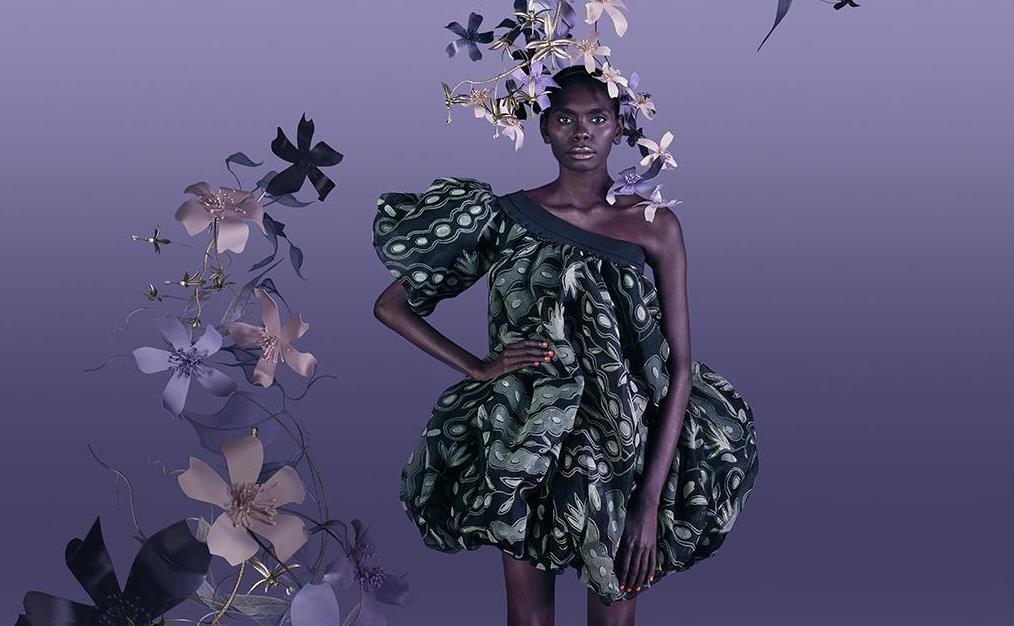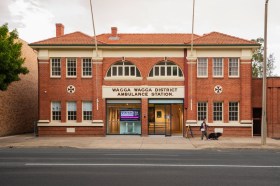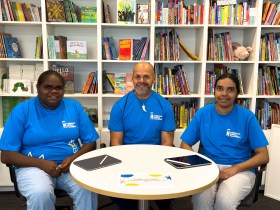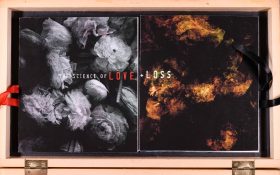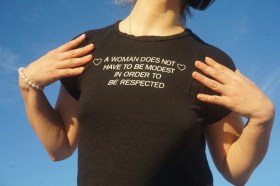In recent years, there has been a marked rise of production and visibility of Indigenous Australian fashion, one escalated by events such as the Cairns Indigenous Fashion Showcase and Darwin Aboriginal Art Fair’s Country to Couture runway event.
That traction received a further institutional endorsement this year, with the formation of the National Indigenous Fashion Awards (NIFA) and the country’s first-ever First Nations Fashion Council, both charged to facilitate growth of First Nations involvement within the fashion sector.
While these avenues provide a vibrant and exciting platform, to date there has not been a major survey exhibition tracking this exciting creative movement. Until now.
Piinpi: Contemporary Indigenous Fashion is presented at Bendigo Art Gallery, in regional Victoria, and has been curated by the gallery’s First Nations Curator, Shonae Hobson.
Hobson said the moment was right now, to take a deeper look. Two years in the making, and with a delayed opening due to COVID-19, the exhibition moves across the collections of 70 artists and designers.
‘There are so many incredible First Nations designers and artists all around Australia, and so many pushing the boundaries in this space and being a leading voice in the industry – we are finally seeing a space for First Nations-led voices,’ Hobson told ArtsHub.
The timing is right now because it’s led by First Nations designers.
Shonae Hobson, First Nations Curator
A Kaantju woman, Hobson says the word Piinpi comes from her great grandmother’s language and is an expression used in East Cape York to describe seasonal changes and regeneration of Country.
To reflect this, the exhibition has been curated with the seasons in mind.
Visitors move from the Dry Season – Kayaman – which celebrates the practice of traditional weaving forms through to contemporary materials and wearable fashion pieces. Next is the wet season – Ngurkitha – which focuses on hand painted garments, textiles and jewellery depicting the colours that flood the land following the heavy rains.
Then comes Pinga, or regeneration, where Hobson has focused artists who have translated their knowledge of the land and bushfoods onto their fabric and textile designs. And completing the journey is the cool season – Piicha Piicha – typically looking at the use of possum and kangaroo skin in designs, before moving to urban wear.
‘For me, it was really important being the first survey to have a broad range of artists in the show, and to look at the nuances of Indigenous fashion and design, from fibre art to textile printing, to jewellery and adornments, to the more couture style garments,’ said Hobson.
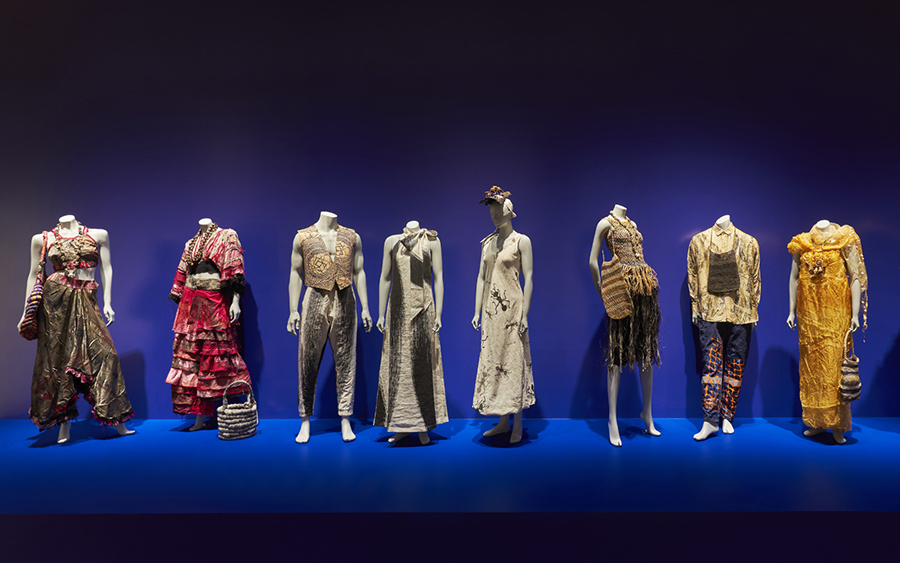
Piinpi installation view. Photographer Leon Schoots.
EMBEDDING PIINPI IN THE WIDER FASHION NARRATIVE
Bendigo Art Gallery has an incredible history of fashion exhibitions, from Italian designer Cristóbal Balenciaga (2019), Undressed: 350 years of fashion in underwear (2014), Modern Love: Fashion Visionaries (2014), to Fashion in the Age of Queen Victoria (2008).
But it is a legacy that has been missing that proudly Australian context.
‘Fashion is a good entry point to learn about our culture and to learn about Ancestral storytelling through a contemporary medium,’ Hobson told ArtsHub.
While some have called this rise of First Nations Fashion a new avant garde, standing out fresh in an environment where the conventional fashion industry has become increasingly conservative or bogged down in brands, Hobson said there are also lesson to be learnt.
‘I think there is a lot that can be learned from these artists and designers, especially in terms of sustainability and slow fashion. Looking at the broader fashion industry and how wasteful it has been, and continues to be, Indigenous fashion encourages us to “slow down” , and focus on the elements of storytelling through design,’ said Hobson.
‘How we care for the environment, and care for Country, is embedded in our clothing,’ she added.
Grace Lillian Lee, Body Armour – A Weave of Reflection Pink and Orange 2018. Photography by Wade Lewis. Image courtesy of the artist.
She said that while designers like Linda Jackson and Jenny Kee really tried to push for First Nations collaboration in the 70s and 80s, First Nations designers were not leading in the space at that time. ‘But now is the right time,’ Hobson said.
These narratives have been left out of the mainstream Australian fashion agenda.
That attraction to collaborate with the fresh frontier of Indigenous design, again happened last year, when the popular Melbourne-based designer Lisa Gorman worked with Mangkaja Arts, of Fitzroy Crossing in Western Australia.
Hobson added that this escalated what had started with the art fairs in Cairns and Darwin, ‘to showcase First Nations designs to a mainstream audience.’
She continued: ‘I hope Piinpi will change the perceptions about what people think is First Nations fashion, and to get a better understanding of First Nations culture – we are a living culture.’
This is no better demonstrated than through the section of the exhibition that looks at Street Wear, where the reclamation of Blak identity and culture through fashion is demonstrated in the works of Teagan ‘TJ’ Cowlishaw, Lisa Waup and Shannon Brett.
Brett’s label LORE has been featured in various runway shows and exhibitions including London Pacific Fashion Week (2018), Melbourne Fashion Week (2019), Indigenous Design Now – Parliament House, Canberra (2019).
It is not just art on canvases, but is story telling through fashion.
Hobson drew attention to Cowlishaw’s Deadly Kween jumpsuit from her label AARLI Fashion, which she described was, ‘about empowering the next generation by using slang words in her street wear apparel.’
Hobson said it is not just about fashion, but about pride.
‘My sister modelled at the Cairns Art Fair in 2017, and it was an opportunity to build confidence and pride. For many young Indigenous people, fashion opens up a plethora of opportunities,’ she told ArtsHub. ‘It is so much more than your conventional fashion storytelling.’
‘These designs are for everybody,’ Hobson concluded.
The exhibition is free, and can be viewed with timed entry. To register your visit.
Piinpi: Contemporary Indigenous Fashion is showing at Bendigo Art Gallery until 17 January 2021.
It will then travel to the National Museum of Australia, in Canberra opening in February 2021.
